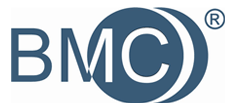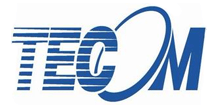Información de país
China has been among the world’s fastest growing economies and achieved a GDP of 7.7 percent in 2013. The country’s healthcare reform for improving its healthcare infrastructure began in 2009, when a healthcare stimulus of $120 billion was provided with the aim of achieving universal healthcare for its citizens by 2020. This has resulted in huge investments in China’s healthcare infrastructure and provided significant business opportunities for manufacturers of medical devices. Currently, there are more than 16,000 hospitals in China, out of which 85 percent are publicly-owned.
Despite significantly expanding the public’s access to medical services, China’s annual per capita healthcare spending stands at just $432, representing 5.2% of its GDP, as per the World Health Organization. The country’s middle class numbering 474 million people, or around 36% of its total population, has already surpassed the entire population of the U.S. It is estimated that by 2020, China will have 400 million people who are aged 60 years or older, and 100 million people aged above 80 years. By 2025, China is expected to have almost 300 million senior citizens requiring medical services and by 2050, a third of its total population of 1.4 billion will be aged 60 years, thus bringing the region’s demographic dynamics in line with those of most developed countries. As a result, there will be a parallel increase in the demand for access to quality healthcare and technology, thus driving the growth in China’s medical device market.
Información de mercado
China’s medical device market has been growing at a rate of around 20 percent since 2009, led by a rise in discretionary income and fast aging population. China’s medical device market is ranked the second largest in the world and achieved a total size of USD 34.68 billion in 2013 for the first time in history, according to a report by Medical Device Branch, China Pharmaceutical Materials Association.
China has thousands of local medical device manufacturers, out of which 90 percent produce low-tech products. The country is heavily dependent on imports to fulfill its requirement for medical devices, particularly high-tech, high-price products. Around 75% of China’s medical device market is catered to by imports, mostly from the U.S., Germany and Japan. Among the high-tech medical devices used in China, 80 percent of CT scanners, 90 percent of ultrasound equipment and 90 percent of MRI equipment are imported. Over the period 2008-2013, China’s imports of medical devices grew at a CAGR of 21.8%, while its exports of medical devices grew at a CAGR of 12.5% in US dollar terms.
In recent years, there has been a decline in China’s imports of mid-to-high end products, on account of foreign companies shifting their production to the region.
Current market scenario
China’s growing middle class and aging population, coupled with government support and investment in improving the country’s healthcare infrastructure, has created a huge demand for better health services and consequently, quality medical devices. China’s requirement for medical devices is largely met by imports, or products manufactured locally by multinational joint ventures, especially in the high-technology categories. The China Medical Pharmaceutical Material Association estimates that the prices of imported medical devices in China are 50-100 percent higher than that in the producing countries. Also, Chinese consumers perceive foreign products to be of better quality and worth paying a premium for. Moreover, imported medical devices enjoy higher brand recognition in China, with public hospitals also opting for the products despite their higher costs. All these factors make China an attractive market for foreign manufacturers of medical devices. Since 2009, China’s medical device market has witnessed some consolidation with a number of companies merging and grabbing a larger market share, such as the Wei Gao Group, Mindray, Yuwell, Microport, Le Pu Medical and Fosun Pharma.
Demand trend
In recent years, China’s public spending on health care has increased by 20 percent, though it still comprises just two to three percent of the global medical devices market. Internationally, the size of the respective markets for medicines and medical devices are almost equal, though the market for medical devices in China is just 14 percent of that for medicines. The practice of favoring treatment with drugs over medical devices and focus on treatment over prevention has resulted in a large part of the market being left underserved. However, all this is soon set to change, as China’s large and aging population, continued government spending for improving the country’s healthcare infrastructure, and widening basic health insurance coverage for its people will spur a high demand for medical devices.
China’s medical device market will continue to grow at about 20 percent over the next three to five years and surpass the global market growth forecast to reach USD 48.39 billion by 2015. Some of the medical device categories that will witness the highest growth are medical imaging, patient monitoring, in vitro diagnostic (IVD) technology, and high value consumables.
Competitive scenario
Currently, the U.S., Germany, and Japan are the top three exporters of medical devices to China. Public hospitals in China continue to prefer imported medical devices over domestic ones despite the huge price differential, as they perceive foreign products to be technologically superior to locally made products. However, the present government policies support and encourage local innovation in medical devices. Domestic manufacturers who are successful in getting their products defined as innovative by the China Food and Drug Administration (CFDA) can enjoy expedited approval for registering their products, thus providing them higher lead time for entering the market and competing against foreign suppliers. Some domestic manufacturers, such as Shenzhen Mindray and Shandong Shinva, have already begun producing high-quality products and are competing against foreign suppliers in the medium-to high-level technology categories.
Market entry
Most domestic manufacturers of medical devices in China lack the required expertise and experience, with only some companies having upgraded to provide selected mid-to high-range technology and products. As a result, foreign suppliers continue to dominate the high-tech large medical devices market in China. Foreign manufacturers of medical devices usually establish direct contact with local distributors in the region to enjoy greater control and better representation in the market. A number of foreign companies have set up representative offices in China to manage product registration, promotion, marketing, training and support. These companies have appointed regional or local distributors for sales, actual operation, logistics and receivables with hospitals.
Barriers
The China Food and Drug Administration (CFDA) is responsible for regulating all medical devices in the Chinese market. The CFDA carries out testing and evaluation, and grants administrative approval for medical devices to be sold in the country. China’s State Council promulgated the Regulation for Supervision and Administration of Medical Devices (Order 650), which was implemented on June 1, 2014. Based on this new regulation, all imported medical products are required to be registered or notified with the CFDA through the authorized distributor appointed by foreign manufacturers, or through their representative office or subsidiary in China. The CFDA follows a comprehensive system for registration and inspection of medical devices, including product testing and factory audits. The entire process is generally complex and time consuming, with the final approval coming through one to three years after submitting all the required documents and samples for testing. Apart from this, pricing control, tender, and bar code systems also delay foreign companies from entering China’s medical device market.










